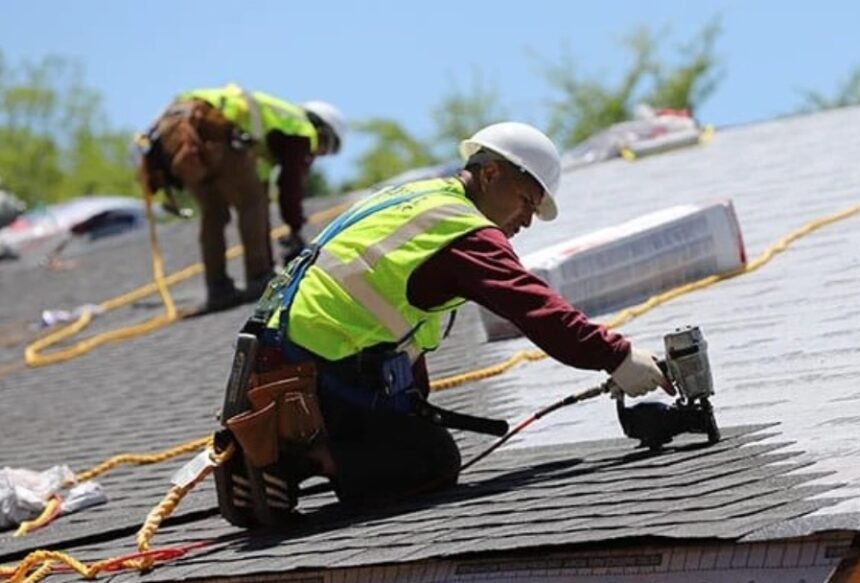Understanding the Real Needs of Your Roof
When water stains appear on ceilings or shingles start curling, homeowners often rush into repairs without fully assessing what’s going on above their heads. A small patch might seem like the quick answer, but sometimes, the problem runs deeper. Knowing whether your property needs a simple repair or a full overhaul starts with understanding the core issues of Residential Flat Roofing NY systems.
Flat roofs are common across New York for their practicality and clean look. They’re cost-effective and make maintenance simpler, but they’re also prone to drainage problems, leaks, and membrane wear over time. The first step in determining whether you need a fix or a full replacement is understanding how these systems are designed to perform.
The Warning Signs You Shouldn’t Ignore
Not every roof issue screams for attention — some problems build quietly until they cause significant damage. Key warning signs include:
- Pooling water: Flat roofs rely on a slight slope to direct water to drains. If water sits too long, it can seep through the membrane and damage insulation.
- Blistering or bubbling: Air or moisture trapped under the surface can weaken your roof’s waterproofing.
- Cracks and punctures: Even small openings allow water intrusion that spreads through layers over time.
- Visible sagging: A roof that dips or feels soft underfoot signals structural problems beneath the surface.
If you notice more than one of these issues, it’s time to evaluate the full system rather than just patch the problem spot.
When a Repair Is Enough
Minor surface issues can often be fixed without replacing the entire roof. If damage is limited to a small area, a professional can reseal seams or apply a new coating layer. Regular inspections help detect these early-stage problems.
A Residential Flat Roofing NY system typically lasts 20 to 25 years when maintained properly. If your roof is relatively new, focused repairs can extend its lifespan. Recoating the surface every few years adds extra protection against UV rays and weather exposure.
However, temporary fixes only go so far. Overusing patches or ignoring recurring leaks can end up costing more in the long run.
When It’s Time for a Full Overhaul
There are clear signs that a complete roof replacement is the smarter long-term choice. If more than 25% of your flat roof is damaged or repairs keep recurring, replacement becomes more economical. Aging materials, constant leaks, and widespread deterioration compromise the entire structure.
A new Residential Flat Roofing NY installation isn’t just about replacing old materials — it’s a chance to upgrade to modern systems that improve insulation and drainage. Newer membranes like TPO or EPDM are more durable and energy-efficient. Investing in a full overhaul reduces long-term maintenance and enhances energy performance for your home.
The Cost Factor: Thinking Long-Term
Homeowners often hesitate at the idea of a full replacement because of cost. Yet continual patch jobs add up fast. A quality Residential Flat Roofing NY replacement may seem expensive upfront, but it pays for itself by lowering heating and cooling costs, preventing water damage, and minimizing ongoing repairs.
Energy efficiency is another major advantage. Modern flat roofing materials reflect heat, reducing indoor temperatures in summer and cutting down on air conditioning expenses. Over time, these savings can offset much of the initial installation cost.
Flat Roofing Maintenance Basics
Once you’ve repaired or replaced your roof, ongoing maintenance ensures it lasts its full life span. Flat roofs demand consistent care because even minor neglect leads to expensive problems. Keep these maintenance practices in mind:
- Schedule biannual inspections: Spring and fall checks catch early signs of damage after seasonal weather changes.
- Keep drains clear: Debris like leaves or dirt can block drainage systems, leading to standing water.
- Inspect after storms: New York weather is unpredictable, and post-storm checks can prevent leaks from worsening.
- Trim nearby trees: Overhanging branches can scrape or puncture membranes during strong winds.
Following these steps ensures your Residential Flat Roofing NY system stays functional for decades.
Understanding Material Lifespans
Different materials have different maintenance needs. Built-up roofing (BUR) systems are durable but heavy, while modified bitumen is flexible and easy to repair. Single-ply membranes like EPDM or TPO offer excellent energy efficiency but require professional installation.
Choosing the right material depends on your home’s structure, climate, and long-term budget. Discussing these factors with an experienced roofer helps ensure your next installation fits your home’s needs perfectly.
Energy Efficiency and Home Value
A well-maintained flat roof contributes more than just protection — it enhances your home’s overall energy performance and resale value. Modern roofing systems are designed to reflect UV rays, improving comfort indoors while reducing energy use. Potential buyers view energy-efficient roofing as a major plus, making your home more attractive on the market.
Final Thoughts
Whether you choose a quick repair or a complete overhaul depends on the condition of your roof, not just the cost of the fix. Ignoring minor issues or delaying maintenance only leads to more extensive damage later. Investing in a quality Residential Flat Roofing NY system ensures your home stays safe, efficient, and valuable for years to come.









